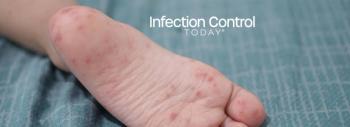
Treating Shingles After It Appears Doesn't Reduce Increased Stroke Risk
Stroke risk increased significantly in the days, weeks and months after shingles appeared, despite use of the shingles vaccine and antiviral therapy to treat it, according to preliminary research to be presented in Honolulu at the American Stroke Association's International Stroke Conference 2019, a world premier meeting for researchers and clinicians dedicated to the science and treatment of cerebrovascular disease.
Centers for Disease Control and Prevention (CDC) researchers studied more than 35,000 Medicare fee-for-service beneficiaries who had been diagnosed with shingles, also known as herpes zoster, and acute ischemic stroke between 2007 and 2015. They analyzed whether having the shingles vaccine, Zostavax, as a treatment, antiviral therapy or both after shingles would impact patients' stroke risk. They found that stroke incidence jumped by 61 percent within 14 days after shingles onset. The increased stroke risk remained elevated six months after shingles but diminished with time.
Researchers didn't find any evidence that having the vaccine or taking antiviral therapy once shingles appeared helped to reduce the increased stroke risk. But the researchers suggest having the shingles vaccine might be the most effective way to prevent shingles-associated stroke risk.
Shingles is an often painful rash caused by the virus that causes chicken pox. Almost 1 in 3 people in the United State will develop shingles in their lifetime, according to CDC. The American Heart Association recommends adults over age 50 get the shingles vaccine. The new vaccine, Shingrix, approved by FDA in 2017 has shown to be more than 90 percent effective at preventing shingles. In this study, researchers examined the effect of the Zostavax shingles vaccine because Medicare data was not yet available for the Shingrix shingles vaccine. Zostavax efficacy declines over time and protection from shingles only lasts about 5 years with Zostavax.
Source: American Heart Association
Newsletter
Stay prepared and protected with Infection Control Today's newsletter, delivering essential updates, best practices, and expert insights for infection preventionists.






